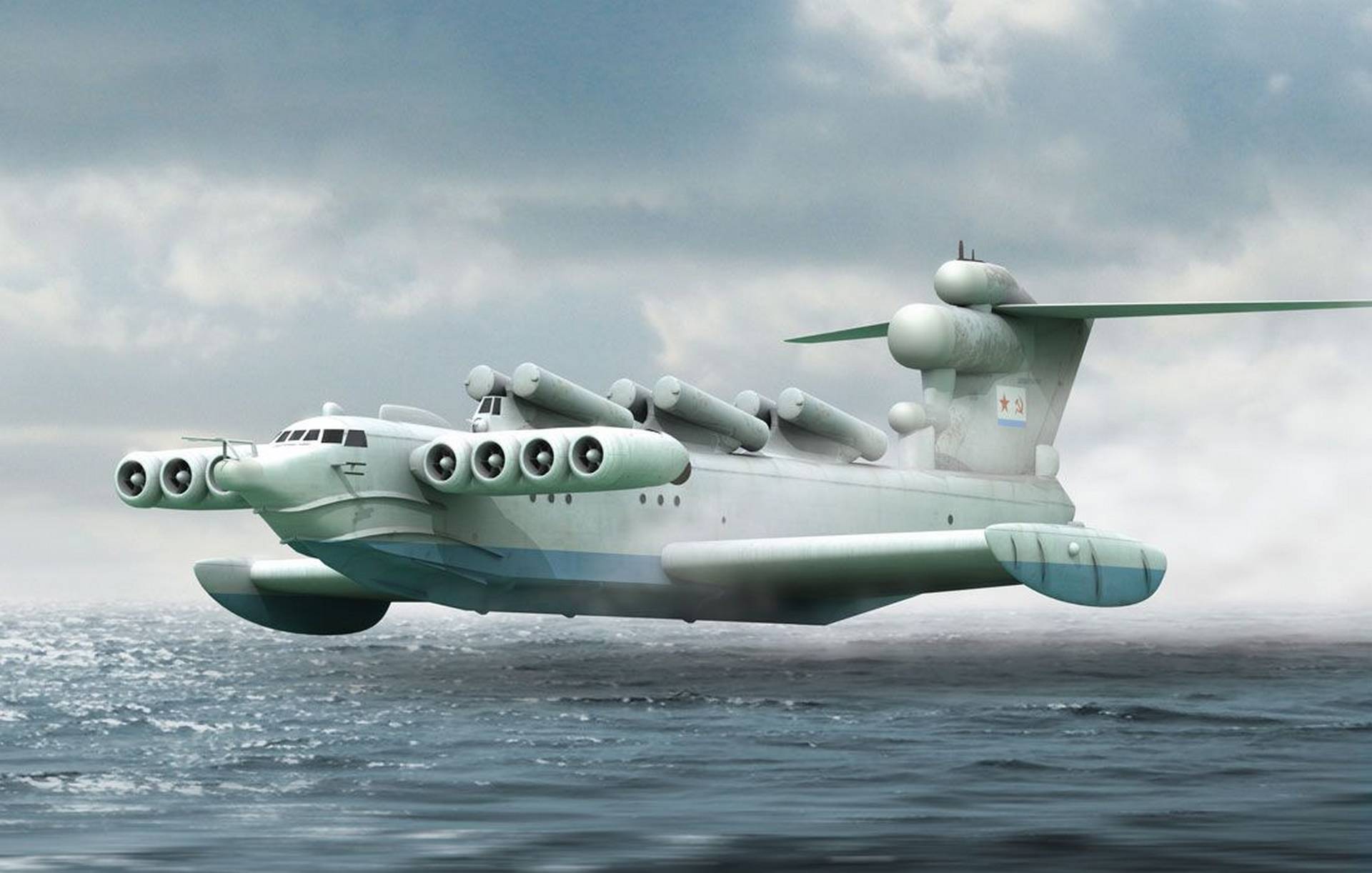DARPA Unveils Liberty Lifter: A High-Altitude Seaplane Designed for Heavy Cargo Transport (Video)
DARPA Selects General Atomics and Aurora Flight Systems for Liberty Lifter Seaplane Wing-in-Ground Effect Development
The Liberty Lifter is designed to carry heavy payloads over long distances.
In 2022, DARPA announced an ambitious project to develop an aircraft known as the Liberty Lifter. This aircraft, with the size and capacity of a C-17 Globemaster III transport aircraft, aims to lift over 100 tonnes of payload. To put this in perspective, a C-17 can manage about 77 tonnes on its best day. Notably, the Liberty Lifter is designed as a seaplane with a remarkable ferry range of 6,500 nautical miles (7,500 miles or 12,000 kilometers), enough to journey from the North Pole to the Equator with some margin to spare.
The secret behind this impressive performance lies in an esoteric aerodynamic phenomenon known as “ground effect” or “wing-in-ground effect.” This phenomenon played a pivotal role in one of the intriguing mysteries of the Cold War era.
In the late 1960s, American spy satellites monitoring the Soviet Union observed a peculiar and exceptionally large aircraft maneuvering over the Caspian Sea. Dubbed the “Caspian Sea monster” by the intelligence community, this massive aircraft weighed over 500 tonnes and had stubby wings that seemed incapable of supporting its immense weight in flight.
The Aurora concept
It was later revealed that this enigmatic craft was an ekranoplan, part of a series of ground effect vehicles being developed by the Soviet military. These vehicles could fly at very low altitudes, hugging the surface of the water, and evade radar detection while carrying a heavy missile payload.
The key to their success lay in their extremely low operating altitude. Ground effect occurs when an aircraft flies very close to the ground, or ideally, over water. Without delving into too much technical detail, when an airplane moves forward at low altitude, it effectively creates a cushion of trapped air between itself and the ground. This reduces drag and increases lift, enabling the aircraft to have smaller wings, carry heavier loads, or a combination of both.
This is why the Caspian Sea monster could be so massive and still fly with stubby wings. Unfortunately, such ground-effect craft have significant limitations, including a preference for calm, flat water surfaces and a distinct aversion to rough seas.
DARPA’s Liberty Lifter project aims not only to overcome some of these shortcomings but also to advance the technology to create an aircraft capable of ferrying heavy loads over great distances. This aircraft should be capable of taking off and landing on water, eliminating the need for conventional runways. Additionally, it should be affordable to build using boat-building techniques and able to operate for extended periods without maintenance.
The General Atomics concept
In addition to these requirements, the Liberty Lifter must be able to take off and land in Sea State 4, where waves can reach heights of up to 8.4 feet (2.5 meters), and operate on water in Sea State 5 with waves up to 13.1 feet (4 meters). Furthermore, it should function as a low-altitude aircraft, capable of transitioning out of ground effect to reach altitudes of up to 10,000 feet (3,000 meters) above sea level.
For Phase 1 of the project, Aurora Flight Sciences, in collaboration with Gibbs & Cox and ReconCraft, is developing a craft that resembles a traditional flying boat, featuring a single hull, high wings, and eight turboprop engines. Meanwhile, General Atomics and Maritime Applied Physics Corporation are working on a more unconventional twin-hull, mid-wing design for improved water stability and seakeeping, powered by 12 turboshaft engines.
Phase 1 is expected to span 18 months, consisting of six months of conceptual design work and nine months of design maturation before submitting the results for a preliminary design review and test/demonstration planning reviews three months later. Following this, Phase 2 in 2024 will see the successful design move forward to the design, manufacturing, and demonstration of a full-scale Liberty Lifter X-Plane.
DARPA Liberty Lifter Program Manager Christopher Kent expressed excitement about the program’s kickoff, emphasizing the distinct design approaches of the two teams that will enable exploration of a relatively large design space during Phase 1.
Video: DARPA Begins Designing Massive Carrier Seaplane – Liberty Lifter X-Plane
Hits: 167










